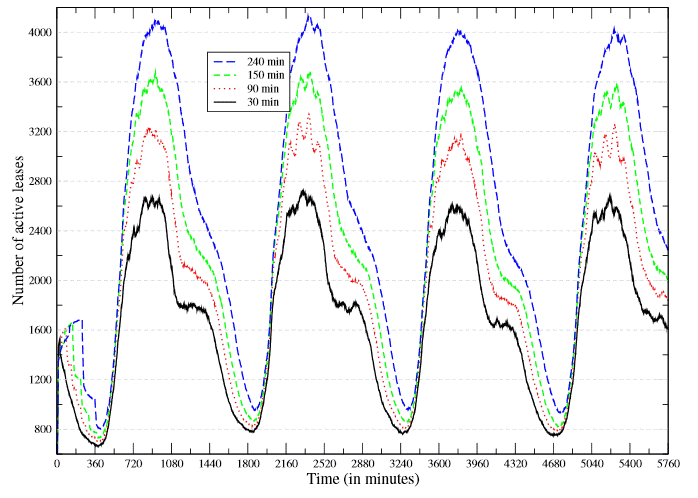|
Dynamic Host Configuration Protocol (DHCP)
An Introduction |
|
Prof. David Bernstein |
| Computer Science Department |
| bernstdh@jmu.edu |
|
Dynamic Host Configuration Protocol (DHCP)
An Introduction |
|
Prof. David Bernstein |
| Computer Science Department |
| bernstdh@jmu.edu |
null characternull character;
generic/null for discovery, path name for offers
Number of Active Leases at Different Times of Day (over Four Days) at Georgia Tech (for Four Different Lease Times)
 Source: Khadilkar et. al (2007)
Source: Khadilkar et. al (2007)